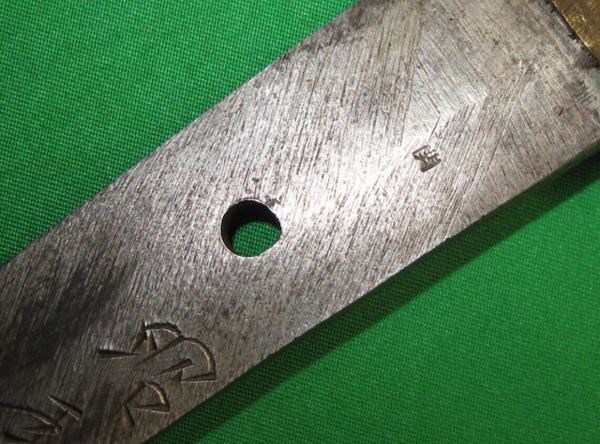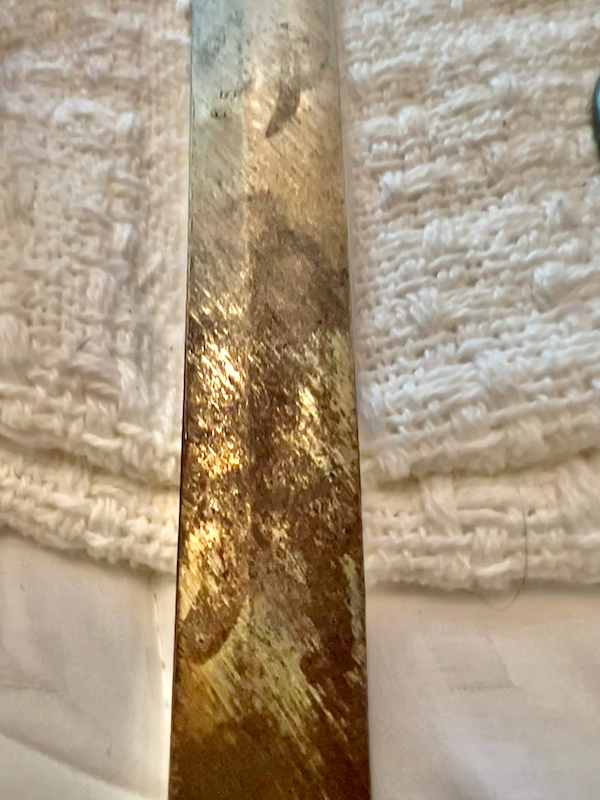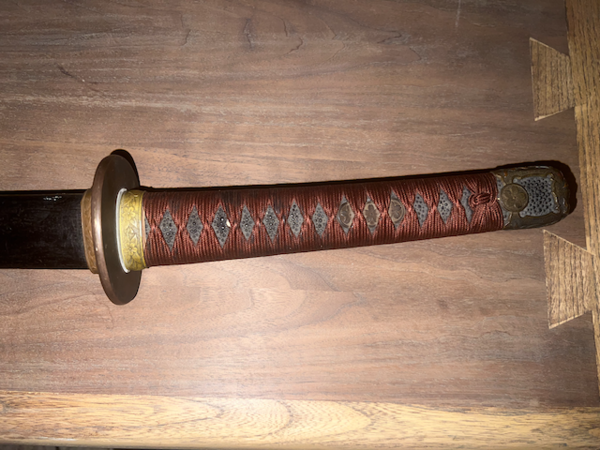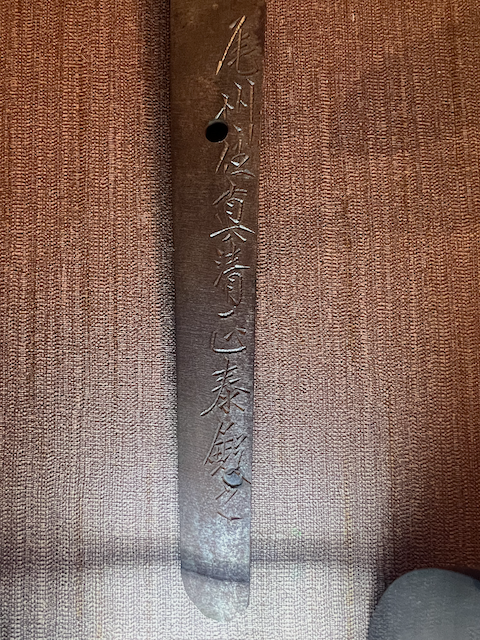
Conway S
Gold Tier-
Posts
342 -
Joined
-
Last visited
-
Days Won
1
Content Type
Profiles
Forums
Events
Store
Downloads
Gallery
Everything posted by Conway S
-
This is a great reference. If you go to the download tab of this site there is also a Part 2. But this article mentions the Kamakura stamp and Tenshozan workshop. Conway
-
Michael, It is signed 天照山 鍛錬場 作 -Tenshozan tanrenjo saku. Made at the Tenshozan forge. Lots of references on here. You're right about the year (December). Looks like a nice one. Congratulations on the purchase. It has an Army tassel attached to it. Conway
-
-
Thank you, Piers. The smith has been discussed a few times on here. Looks like you were correct. Conway
-
Greetings, I am set up at a military show today and another dealer has a type 98. Any assistance with the translation would be appreciated. Is the first character Taka or am I way off? If the picture is too blurry I will try to upload a better version. First time using phone to upload. Thanks. Conway
-
Saw this one on eBay. Hiromitsu 1944 with a Gifu stamp on the mune and on the nakago above the mei + a Seki stamp above the date. @Bruce Pennington Conway Japanese Late WW2 Sword with Many Kanji
-
@Jager are you aware this sword was posted on the forum for sale recently? I think I also saw it on eBay in the past. Conway
-
As Chris said, don't do it yourself. You can make it more difficult for a trained professional to polish it properly in the future. There are plenty of threads on the NMB explaining why this is not a good idea. Just oil with choji oil or camellia oil. There are also discussions on the types of oils that should be used to preserve the blade and prevent rusting. Conway
-
Thanks for the replies. I thought gold/brass colored paint would be an odd choice for post-war repaint, unless that is the color of a Rustoleum product I am unfamiliar with... I have seen this hue more than once so I felt inclined to ask. Conway
-
@B Harbin Note on the fuchi, the center stamp is 名 for Nagoya Arsenal (to the left of the cannon balls stamp) The blade stamp following the serial number, however, is 東 for Tokyo. They should match and the Nagoya inspection stamp and serial are read blade up (upside down). So the blade and handle are not original to each other at least from the production standpoint. Conway
-
Greetings, I have seen a few examples of the iron tsuba variation 2A and variation 3 (As Dawson terms them) with what appears to be a gold/brass hue to the same paint. I have read the various threads on here that reference almite, and if I read those correctly the later production swords do not have this coating below the paint. Here is one such example where this color really shows. From some pictures it looks like this gold paint is in spots where the brown has worn off. I am trying to determine if this coloration is period patina or indicative of a later repaint. I also included the link to the site where it sold. I would appreciate any input. Thanks. Conway WWII Japanese Army NCO Type 95
-
The serial number should also be between the bohi (blade fuller) and mune (spine) of the blade. The tsuka (handle) is poorly cast with very little detail and there is no habaki (blade collar). Conway
-
Hello Everyone, I am curious if the brass tsuba is correct for the Kobe series of Type 95s. The examples I have seen on the forum and in Dawson's Cyclopedia have the the black iron tsuba. Thanks in advance. Conway
-
When I saw first saw those markings I thought the horizontal line was a 一 as in 1. Interesting that there is a line above the 4 in the example posted by @PNSSHOGUN. Here is a different example of a 2/二 combination. Anyone have thoughts on why the redundancy was used? Is it possible some workers could not read the Arabic numerals? Conway
-
I saw this one on eBay last week. There are no straight-on photos of the sarute, just the side profile. The mei looks like Kanesada 兼定, but I could be wrong. I initially saw the one Bruce posted then popped over to this thread for more information. Then I found this one later in the day. Conway WW2 Japanese Army officers sword signed blade measures Approx 27 inches
-
@Bruce Pennington pictures of this one are on Page 13 of this thread. To summarize, 65 in Arabic numerals inside saya throat フ六五 = FU-65. on the tsuka, 六五 on signed side of nakago with old numbers underneath Filed over large anchor stamp on the signed side of nakago 伊 followed by two unreadable characters on the unsigned side Stamped 65 on unsigned side of nakago I have the sword. Let me know if you need any more pictures or clarification. Conway
-
@Kiipu I am no expert. It just clicked in my head after you brought up the フ that 伊 was maybe a kana symbol. Originally when I saw it on the Takayama-to #65 I was thinking there was some relationship to the Inaba forge. Interesting for sure the combination of numbers and different formats (Roman Numerals on habaki, Arabic/Chinese numerals on fittings) the Japanese used. There are more characters below the 伊 but unfortunately the heat marks from shortening the jiri damaged them. Probably not correct, but looks like 伊五六. Conway
-
Thanks for pointing that out @Kiipu. Could 伊 also be used as a prefix for an assembly range? The character is found on the unsigned side of the nakago. Also just noticed #65 Masahiro was possibly 四九 first. Conway
-
-
Here are a few pictures of the koshirae on the Masayasu. I think the kabutogane with no hole for the sarute is an interesting feature. Conway
-
@Bruce Pennington I didn't forget about your request for more photos of the Masayasu I posted in the General Nihonto thread. See below for an up close picture of the "delta punch" found on these swords. I tried to get a clear shot of the mune stamp, but the numbers are very small. Conway
-
Here's another #12 or possibly #3 with what is likely a replacement tsuba. I am unable to upload the pictures due to their original formatting. https://www.liveauct...se-ww-ii-naval-sword Conway
-
Found this sword in souvenir fittings #99. Note the two mekugi-ana. It is hard to tell if the anchor stamp is visible in this picture or if it is under the habaki. It may be below the white paint smudge. https://www.liveauct...ese-shin-gunto-sword Conway
-
Neil Young is right. I will post some more pictures of the fittings and the nakago stamps soon. Conway


























